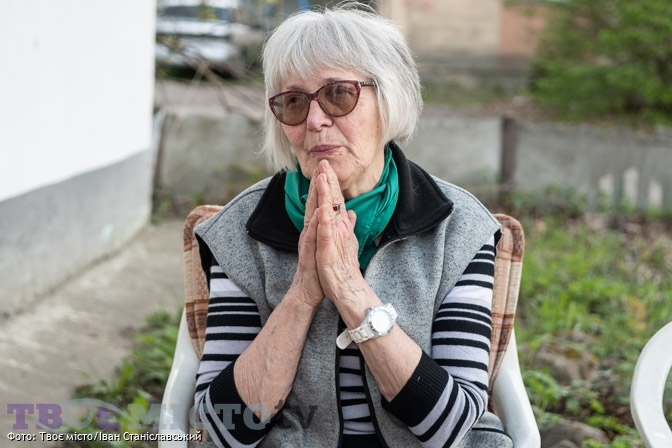
[For urgent updates please follow Ukrainian Freedom News on Telegram]
Mrs. Lesya married Roman Krypyakevych in 1967. The son of a famous Ukrainian historian, Ivan Krypyakevych, he became a physicist and the first vice-consul of Ukraine in Austria. Mrs. Lesya at that time was engaged in art and created tapestries, each of her works contained an element of Ukrainian national thought.
Since the proclamation of Independence, the spouses have found the St. Volodymyr’s Foundation, which, since February 24 this year, has been helping the army and the displaced persons, as well as providing humanitarian aid to Ukrainians in the frontline zone. Mrs. Lesya told us about her family, which represents the main aspects of Ukrainian recent history – her exile in Siberia, work in art, and modern volunteering.
The Tsehelskyi and Krypyakevych families
I have been a part of the Krypyakevych family since 1967. My husband told me how his father, the genius historian Ivan Krypyakevych, wrote in his diary when he was 9 years old: «I have to become a historian. I have to become a great man.» He chose historical specialities because he was constantly exiled to a Polish high school. Finally, he became a disciple of a historian and first president of the Ukrainian People’s Republic, Mykhailo Hrushevskyi, who noted that Ivan had the ability to write easily and commissioned him to write history for the ordinary people. That is why Krypyakevych wrote small books on the history of Ukraine for different classes, for which it was easy to get exiled to Siberia in the Soviet times.
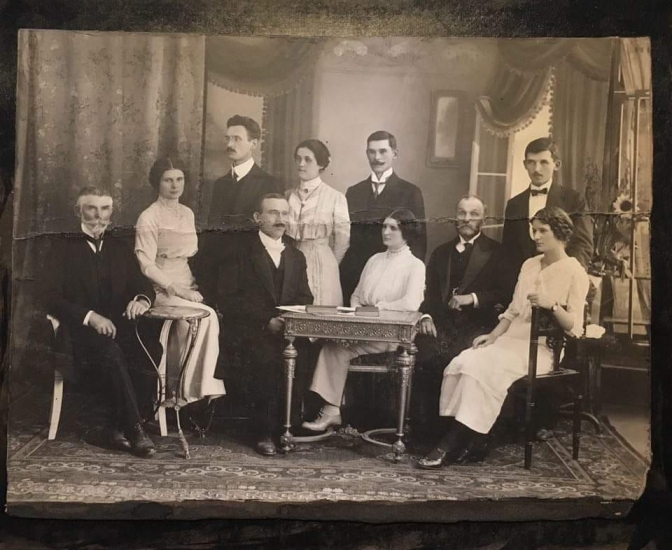
Galician intelligentsia end of XIX – beginning of XX centuries. Ivan Krypyakevych is standing on the first left. Photo from the family archive of the Dymyd-Krypyakevych family
At the same time, my father was one of the last priests ordained in 1942 by the Greek Catholic Metropolitan Andrei Sheptytskyi, because the latter was no longer able to walk. One day, he blessed my mother, put his massive hand on her head. After that, she said she would endure all the tortures in prison because Sheptytskyi’s hand had been on her head.
My father died and hadn’t seen how the Church came out from the underground. But he always said: «You will see how that empire will fall apart, how our Church will become glorious and the enemy will be disgraced.» How did he know that? At first, the Church came out of the underground, and currently, literally before our eyes, the enemy is experiencing such shame in the whole world.
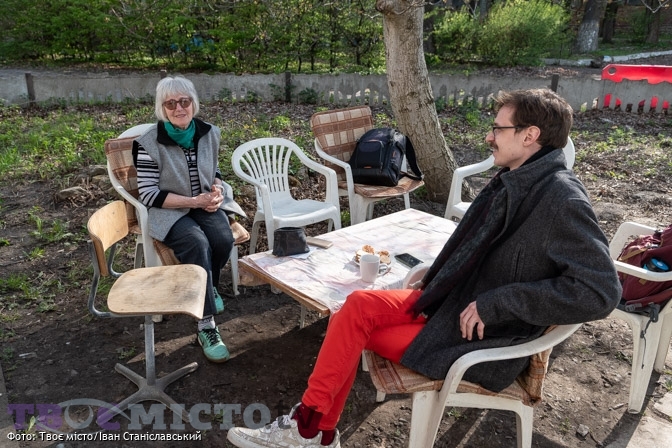
My youngest brother, Petro, was born in Siberia, and we thought he would not survive. My mother brought him from the sanitary unit on a sleigh through the snow. But he proved to be very capable of music, became the first violin of the Kyiv Opera after graduating from the Moscow Conservatory. He was a favourite student of the famous violinist David Oystrakh. Petro has given more than 20 concerts in Japan and has his students there. He is the only Ukrainian who was the first violinist of the Warsaw Philharmonic for over 15 years. This has never happened in the musical history of Poland.
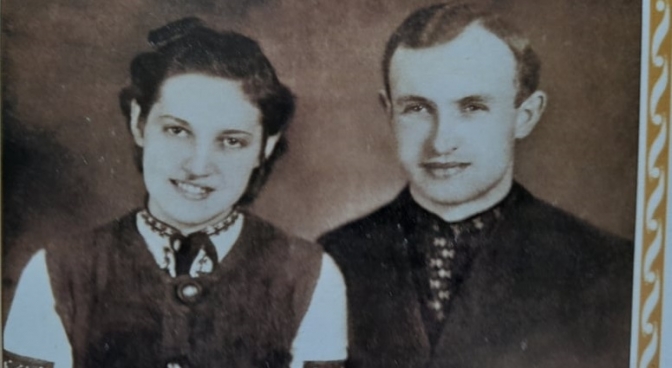
Marriage photo of Mrs. Lesya’s mother – Marta Skobelska and Artemy Tsegelsky, violist and future priest
My exile to Siberia
My family was sent to Siberia when I was 5 years old, in 1950. We were three children: 3, 5 and 7 years old. Tomsk region, Krivosheinsky district, the village of Krasny Yar – that’s where my brother Petro was born. Along the Ob River, one of the largest rivers in Siberia, there were settlements of prisoners who cut firewood, floated it on the river and paved roads. For the shift, my mother had to prepare a number of trees to feed us.
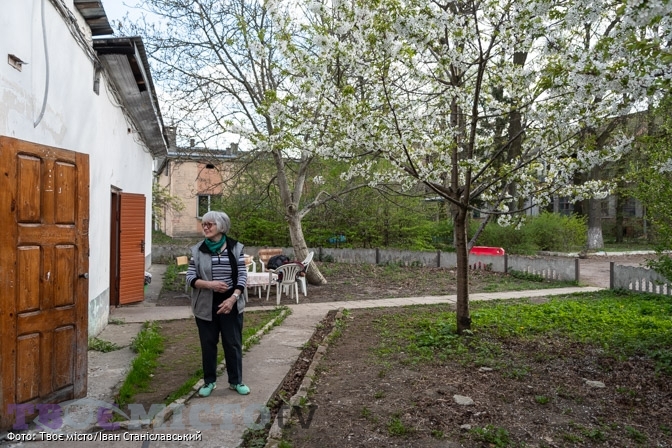
When the Church was persecuted, priests were arrested. My grandfather, Father Ihnatiy, my dad, Father Artemiy, and my mother were in prison on Lontsky Street. My grandmother and I stayed at home. My mother spent three months in prison, and when she was released, we were loaded into wagons and taken to Siberia. I remember a loud knock on the door at night as soldiers’ boots walked up the wooden stairs. A tall soldier came in, my grandmother opened the door, and we were three small children. The soldier said to her: «Hurry up, the old – half an hour to prepare.» My grandmother already had the bags ready, because we were all here in Galicia waiting for the moment when we would be taken out.
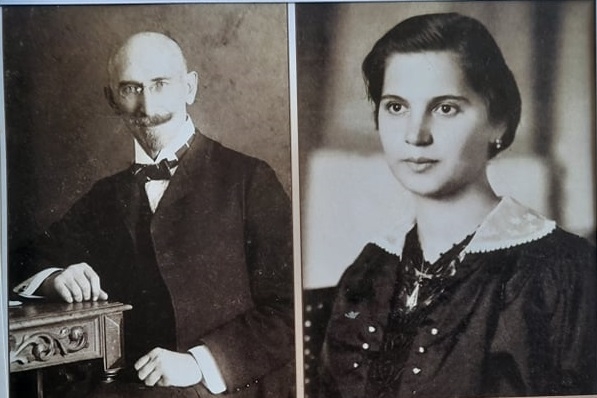
Marriage photo of Ms. Lesia Krypyakevych’s grandmother, Anna Bachynska (Skobelska), and Atanasii Skobelskyi, court counselor in Zolochiv. Photo from the family archive of the Dymyd-Krypyakevych family
I remember my grandmother wearing white tights to my three-year-old sister, and she cried after being woken up. We were loaded into an open car. Grandma had crackers, she took some cups and a jar of milk, but the soldier dug her with his boot, and it spread. The moon shone, and it was reflected in the moonlight. I still remember the curtain peeking out the window. Probably, the neighbours watched us being taken away. We survived because my dad could play the violin.

The Tsegelsky family after returning from Siberia. The top row is the first on the left – Bohdana, the future mother of Ukrainian nationalist politician Oleh Tyagnybok. Photo from the family archive of the Dymyd-Krypyakevych family
My art: work and discipleship with Karl Zvirynskyi
When Stalin died, we received the opportunity to return to Lviv. I was 13. At first, my grandfather took me to art school because he said that I drew pictures well and needed to continue my studies. Then, I entered the Lviv Academy of Arts for tapestry. In the first year, she joined the school of Karl Zvirynskyi – a master, Honored Artist of Ukraine. His works can now be seen at the Museum of Modern Art in Lviv. He was a phenomenal teacher who had the gift of teaching from God. In that regime situation of the Soviet Union, it was difficult to remain a decent person, an interesting artist who did not fit into the framework of socialist realism, created something of his own and, moreover, had students.
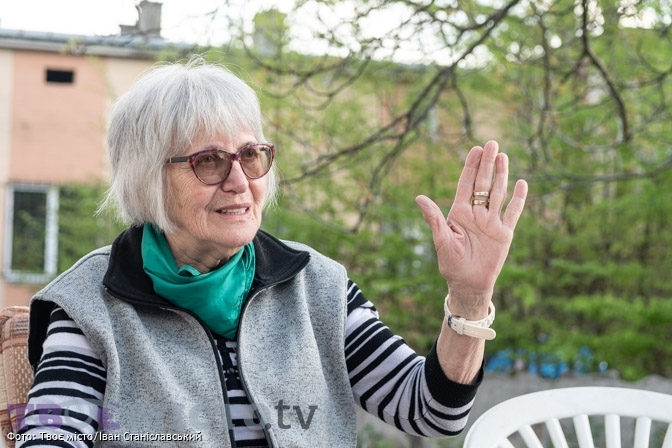
Twice, my works were at international symposiums, although I did not belong to the Union of Artists before the proclamation of Independence, so I could not get permission to go abroad. That’s because the Union gave a recommendation to the KGB and the Ministry of Foreign Affairs. In all my works, I put a «quiet bomb», I could not just make decorative things, but always made them problematic or devoted to some significant date, which was silenced in Russia. For example, my tapestry for the 350th anniversary of the Kyiv-Mohyla Academy. In Russia, everyone was silent about it, while the Academy was the highest education in Europe at that time. I made a tapestry that was exhibited in Kyiv. It depicted the seminary students who held a book with the coat of arms of hetman Mazepa. The KGB didn’t know what the badge was, but for me, it was this «quiet bomb» that I put into my work.
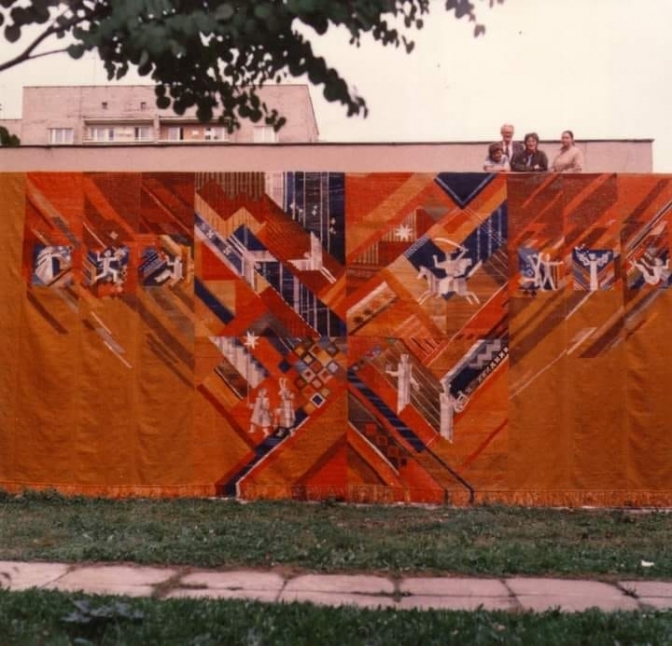
Curtain for the Puppet Theater in Rivne. 450x1200 cm. Weaved by Oleksandra Pryveda, Lesya Krypyakevych and Sofia Burak. Photo from the family archive of the Dymyd-Krypyakevych family
There is the same curtain in Yoshkar-Ola, Mari Autonomous Soviet Socialist Republic. I received an order to make a curtain for the House of Culture in this city. We came to a country that has its own national identity, so I went to look for it with my colleague. First, they went to the bookstore, started to look for literature in the local language, but nothing was found. Still, the museum had fantastic jewellery, embroidery, and decoration. We wanted to weave their language into this curtain. However, the professor at the museum said very sadly that their language did not exist, as did his people, who were soldered and destroyed. It was scary to say that at the time.
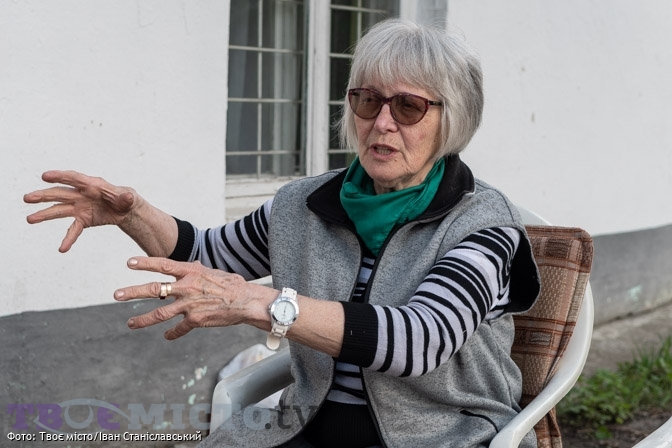
Then I asked if they had a national song to sing as an anthem. He sketched me the notes of this song on paper, and we made a curtain: fanfares, interwoven wreaths, and wrote the anthem on the ribbons. Nobody knew that. But maybe one day, a young man will come looking for his roots, read those notes and understand that someone also «shot» in that direction.
Modern volunteering
My husband, Roman Krypyakevych, was a co-founder of the St. Volodymyr’s Foundation. He was the first vice-consul of Ukraine in Austria as a man who knew German well. He made his way to Europe in the early 1990s.
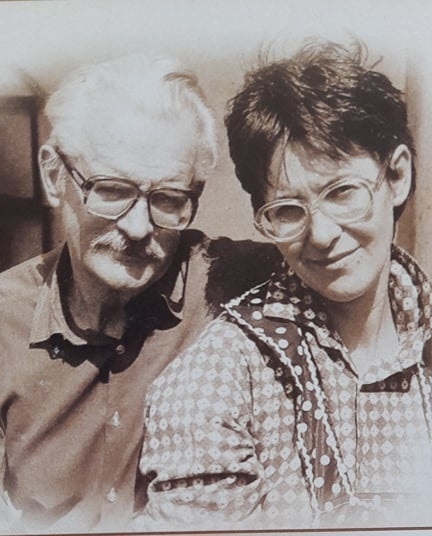
Mrs. Lesya Krypyakevych-Tsehelska and Roman Krypyakevych. Photo from the family archive of the Dymyd-Krypyakevych family
In 1990, all art seemed to be cut off for me. I did not return to it, only engaged in public work. We have established foreign relations – Austria, Germany, Switzerland. Metropolitan Liubomyr Huzar publicly said that we were agents of trust doing a good deed, and gave us the green light. That’s why we have been involved in charity since the beginning of Independence.
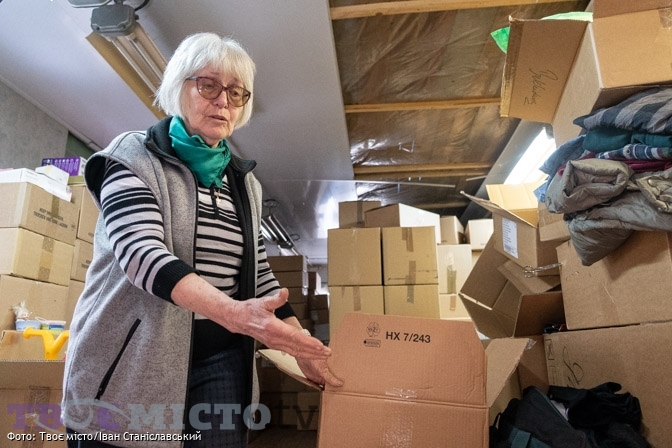
Since the beginning of the war, we have focused all our efforts on helping the army and civilians. Today, we sort and send various humanitarian aid every day. Someone may have good PR people and spread messages that 250 kilograms of cargo are sent to the front. We have already sent more than 70 tons of different loads, but we never deal with these ads, so most of this isn’t known.
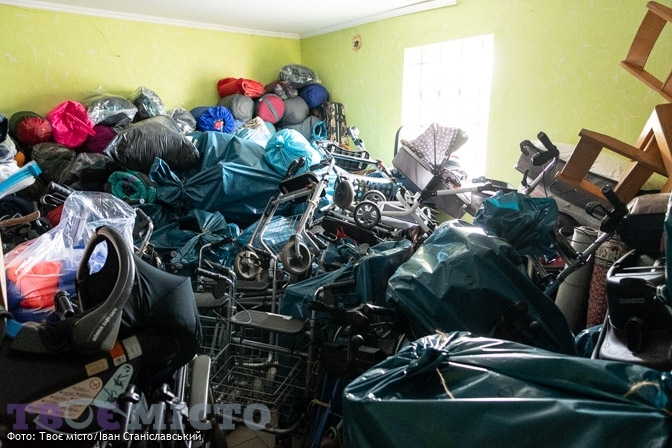
The grandchildren
My family is still fighting for Ukraine, for its future. Ivanka, the daughter, is a wonderful icon painter who has worked with many prominent masters and painted numerous churches. For example, the Chapel of the Presentation of the Lord at UCU together with the deceased Ostap Lozynskyi.
My eldest granddaughter, Klymentia, a designer, photographed Maidan. She told the story of how Maidan residents were detained. With some truths and untruths, Klymentia got into the place where they were held, took photos, and then took those guys out.
Her photos, taken with a phone camera, became the covers of leading American magazines. They were sold at various international exhibitions, including in Germany. The Germans had no idea what was going on here. I shared those photos, and then Heinz-Josef Nüchel, a student of the first post-war chancellor of West Germany and founder of the Christian Democratic Party, Konrad Adenauer, wrote to me and said that he was a friend of Angela Merkel and was going to talk to her, so he asked what else we would like to say. «Write me the points I need to talk to her about,» he said. And we, the whole team of the foundation, sat all night and made those points for him. A week later, he called us: «I had a conversation with her.»
Each niche had to be filled. Liubomyr Huzar said: «As you are given an invitation – go! Go and fill every niche, so that you are everywhere, so that Ukraine sounds everywhere! «
Klymentia took those photos, and two of them received an award in the New York Times. She was invited to pick it up, and then bought her first computer with that money. Klymentia graduated from the Trush Art School, became a good graphic artist and sees art well. Now, she is expecting a baby.
Two more of my grandchildren, Artemiy and Dmytro, are now at the front. Artemiy parachuted more than a hundred times in Switzerland and South Korea. He makes such incredible things in the air that I die every time he shows it to me. He went to the front as a volunteer fighter, having good training because of being a scout.
Dmytro studied ethics, politics and economics at UCU, and cycled all over Ukraine, from Uzhhorod to Lysychansk. He also went as a volunteer to the front. He has a big head, so I can’t find his helmet size 62.
Magdalena graduated from UCU with a degree in theology. She used to make a video with her younger sister, Emilia, and her father Mykhailo for the YouTube channel «Christian or Bandit«. She is currently participating in a Roman Catholic mission from the House of the Heart near Naples. She writes wonderful posts there and makes wonderful short films. Ivanka jokes that «Fellini smokes in the corner and his hands are shaking.» She also made a film for us before the congress of Ukrainian Youth for Christ organization.
What needs does the St. Volodymyr’s Foundation have
We have warehouses on the territory of the former prison. This prison was sold to IT companies, so we are again in uncertainty, we need to look for premises. If God wants us to keep working, He will help us find it.
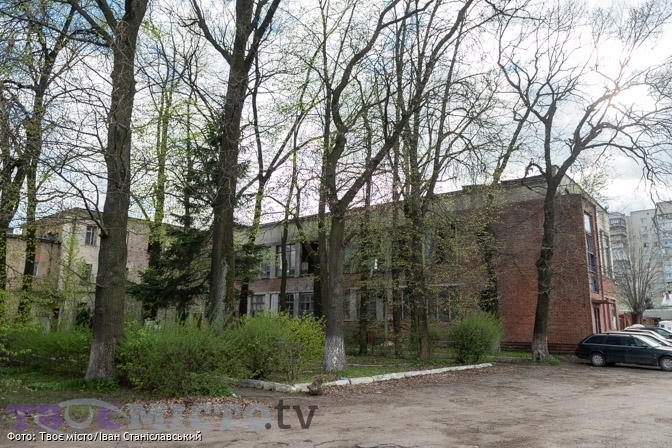
Read also: Ukrainian-Texan tech firm to transform Lviv prison to global tech campus
All tenants are gradually vacating the premises, and the new owners are taking measurements. And they treat us well. Perhaps, we will offer them cooperation: to build a large hangar that can be used as a warehouse and which they would then have left.
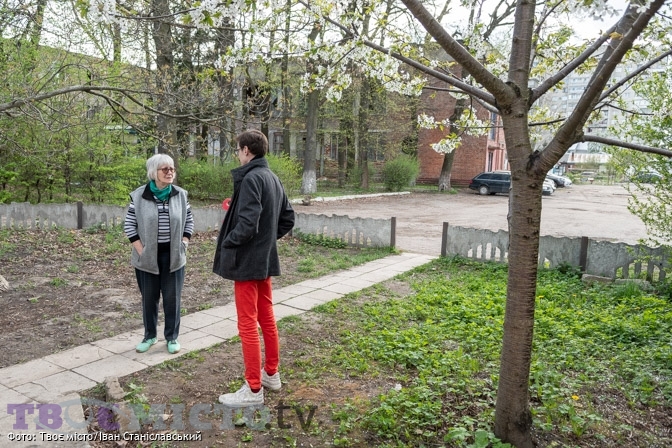
Roman Tyshchenko-Lamanskyi, translated by Vitalii Holich
Photo: Ivan Stanislavsky / Your city
Full or partial publication of the text without the written consent of the editors is prohibited and is considered copyright infringement.
Follow us on Facebook and Instagram. Lviv Now is an English-language website for Lviv, Ukraine’s «tech-friendly cultural hub.» It is produced by Tvoe Misto («Your City») media-hub, which also hosts regular problem-solving public forums to benefit the city and its people.







